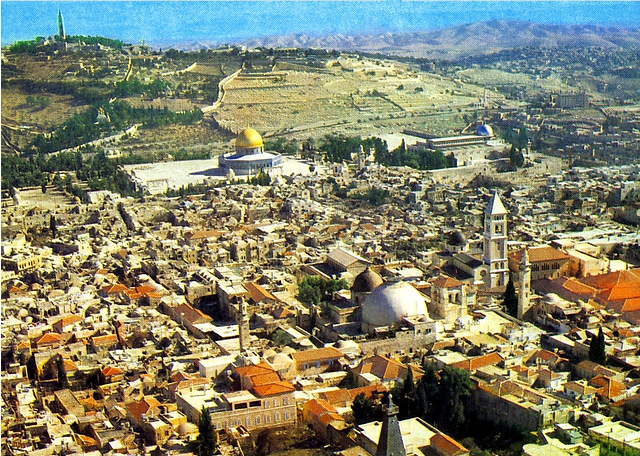In the Christian Quarter of the Old City of Jerusalem, sits the Church of the Holy Sepulchre. This ancient building has been built and destroyed a number of times over the centuries. It sits on the traditional location of Golgotha (where Jesus was crucified) and the tomb of Joseph of Arimathea. The building is maintained by seven different religious groups (Roman Catholic Church, Greek Orthodox Church, Eastern Orthodox Church, Armenian Apostolic Church and to a lesser degree the Coptic Orthodox, Ethiopian Orthodox and Syriac Orthodox Churches). They operate under a "status quo" understanding in which each of them maintain their own areas and do not venture into other group's areas. However, in common areas, tasks are performed by all groups, but only if all seven groups are in agreement with the course of action.
 Just above the main entrance, there is a second floor window with a wooden ladder underneath it. Although the exact date is unknown, that ladder has been in the same place since, at least, 1854. Why is it still there? The location where the ladder sits is in one of the "common areas" that I mentioned earlier. And, unfortunately, there is not consensus agreement on who actually owns the ladder. Because of this disagreement, the ladder remains in the same location until such a time all groups can agree on who should move it. (That is not likely anytime soon.)
Just above the main entrance, there is a second floor window with a wooden ladder underneath it. Although the exact date is unknown, that ladder has been in the same place since, at least, 1854. Why is it still there? The location where the ladder sits is in one of the "common areas" that I mentioned earlier. And, unfortunately, there is not consensus agreement on who actually owns the ladder. Because of this disagreement, the ladder remains in the same location until such a time all groups can agree on who should move it. (That is not likely anytime soon.)
Why do I bring this up?
First, the ladder is one of a thousand little things that I look forward to seeing every time I visit Jerusalem. It is always interesting to see. I don't really know why. It just is.
Second, it is a reminder to me to keep things in perspective. As I said, this building sits on the traditional location of the crucifixion, burial and resurrection of Jesus. Arguably, the most significant event in human history. On this same location, a group of men (God's own creation), can not agree on who should move a simple, wooden ladder. It is sad.
Do we have ladders in our life that should be moved, but due to our own arrogance they remain immovable? Just something to think about.
(Would you like to see this ladder and many other sites in Jerusalem? Then, join me next June for my Bible Study Tour of Israel. Be sure to read the description and watch the video about the tour. I would love to have you join me!)











